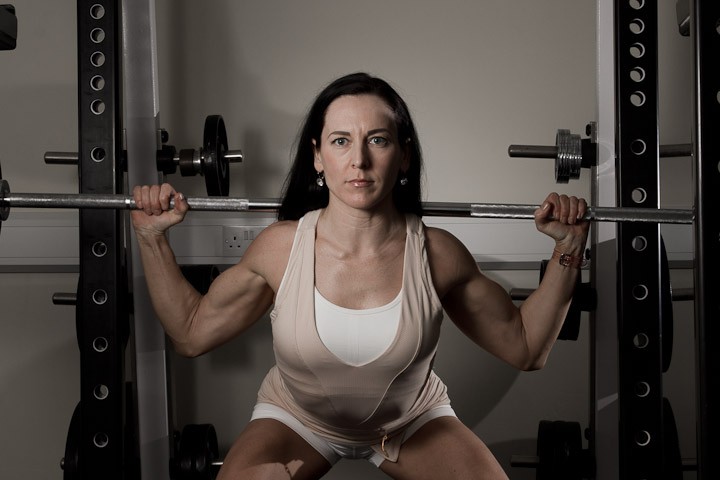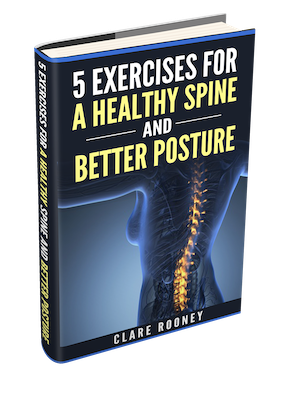Weight Training For Women; The Science

Trainers, Drainers and Complainers
January 14, 2016
The Pitfalls of Paleo
January 14, 2016This is a non edited version of an article I wrote for Fit Pro Network magazine. Also published on ptonthenet.com
Introduction
When addressing the subject of weight training for women it should be noted that several benefits of weight training are applicable to both sexes. Weight training has effects that extend to multiple aspects of our health: muscle mass, body composition, bone density, strength, biomechanical health, hormonal affects, psychological effects, anti aging effects, and cardiac health benefits. The challenge for us as personal trainers is to sell these benefits to our female clients so that they may profit from the myriad of positive outcomes associated with properly structured and progressive weight lifting.
What must be understood first and foremost is that weight training for women is not some separate science. The principles of lever arms, time under tension, progressive overload and intelligent program design apply just as equally to women as they do to men. There are some differences of course but not so much that we require radically different thinking in our approach to the subject of lifting weights. In fact it is my contention based on personal experience training myself, training my clients and looking at the literature that focusing on the” principle of individual difference” is more relevant than focusing on gender differences per say.
Longevity
So what is it about weight training that makes it a must do for anyone seeking health and aesthetic benefits? It’s fair to say that healthy people in general live longer than sick people so if we look at factors that effect longevity then we have some stronger indication of how our training and lifestyle should be structured. The institute that has perhaps carried out more research than any other on the subject of longevity is Tufts University.
In 1991 two professors William Evans PhD and Irwin Rosenberg MD (working for the USDA Human Nutrition Research Centre on Aging , located at Tufts University) released a book called “Biomarkers”(1) In it they detailed the results of the factors that influence aging based on their years of research. Surprisingly aerobic capacity didn’t even make the top 3. Even more surprisingly the top two markers to predict life expectancy were 1: Muscle mass and 2: Strength. Nothing fits the bill in attaining these qualities more effectively than training with weights.
Strength
Many studies have shown Women to be weaker than men. Laubach reviewed 9 studies in 1976 and came to the conclusion that women are 63.5 percent of men’s total strength (2). But this is not exactly a “fair test”. Men in general are larger and have a greater percentage of lean body mass which accounts largely for these greater strength differences. Females have in fact the same potential for strength development if strength in the genders is compared per cross sectional area of muscle (3)
Simply put women have the same potential to get stronger as their male counterparts if they train using correct protocols. (4)
Addressing the fear of bulking up
One of the biggest concerns that women have when it comes to the subject of weight training is the fear of bulking up. Not only does a picture paint a thousand words it can also leave an indelible mark on the psyche of any woman who has ever seen a Pro “female” bodybuilder. These “ladies” knowingly inject themselves with steroid hormones and a cornucopia of drugs to generate the massive manly bulk that sends the average female into a paranoid stupor. (5)The fact is women who train naturally have a very limited potential to develop a large increase of muscle bulk. In his 30 plus years training genetically gifted females of Olympic calibre, Charles Poliquin has stated that he typically sees a gain of about 4kg of muscle tops with a corresponding reduction in fat mass and overall girth reduction. Again to quote the last study by Staron et al significant increases in maximal isotonic strength (1RM) were observed over a 20 week weight training program for the lower extremity with no change in thigh girth (4). So if women train without steroid hormones i.e. naturally it is very unlikely they will turn into Ms Olympia about as likely as going for a jog would transform the average male into Hussein Bolt!
The benefits of “Quality Mass”.
In the body building culture the holy grail of progress is “Quality Mass”! Unbeknownst to most women they actually want the same thing except ladies call it “toning up.” Tissue types can not morph into other tissue types unless you are part of a sequel to the next terminator movie. What can and does happen every day (when you are training and eating correctly!) is the phenomenon of developing increased lean body mass with concurrent fat loss. A jiggly tissue is replaced by a firm dense one. One that not only looks better in a pair of hot pants but is also life extending (1). But do women have the capacity to build muscle? Based on the research the answer is a resounding yes! In a ground breaking paper published in the NSCA Journal multiple studies are cited that show clearly that weight training in women causes “a reduction in fat weight, an increase in lean weight and either no change or only a slight increase in total body weight. All demonstrated significant increases in strength and in most cases these changes were associated with no change or a decrease in lower body girths and only minimal increases in upper body limb girth” (6)
Growth hormone and the search for the fountain of youth.
Women are universally revered for one trait above all others (if they have it!) This trait is beauty. Expose any woman to the secret of enhancing their skin hair and nails all while slowing the aging process and you could just have won a friend for life! You see aging is in many ways a phenomenon of the repair process of tissues slowing down. It’s known that growth hormone decline is part of this aging process. (7). A study published in the December 2006 issue of the American Journal of Physiology-Endocrinology and Metabolism by the highly respected William Kraemer and company (8) has shown that not only does weight training stimulate growth hormone production but it stimulates a more biologically active growth hormone. The study showed that varying types and sizes of growth hormones were produced depending on the exercise protocol with heavier training producing growth hormone variants of larger sizes. This has serious implications for women who want to harness the benefits of a greater production of growth hormone (bone, muscle development, longevity). Their training programs need to be periodised to include a range of intensity and rep prescriptions. The study tested the repetition ranges of 3 to 12 reps so perhaps its time to nudge women away from the little pink dumbbells and the 20 plus rep sets.
Other benefits in brief
- Weight training alleviates symptoms of depression in women (9)
- Weight training improves insulin sensitivity in women. (10)
- For every 1lb of muscle gained a female can burn up to 50 extra calories a day (11)
- Weight training can result in positive changes in self concept and self esteem for women of varying ages and abilities. (6)
- Women are just as capable of fibre type conversions from weight training. The changes are similar to those in men and suggest that considerable hypertrophy of all major fibre types is possible in women if exercise intensity and duration are sufficient. (4)
- Weight training reduces the risk of osteoporosis as it provides greater osteogenic stimulus than endurance type sports. (12)
- “Highly trained male and female athletes are similar in lower body strength, when expressed per unit of body weight; cardiovascular endurance capacity; body composition; and muscle fiber type. What once appeared to be dramatic biological differences in physiological function between the sexes, may, in fact, be more related to cultural and social restrictions placed on the female as she attains puberty, i.e. a sedentary lifestyle. “ (13)
References
- “Biomarkers” by William Evans PhD and Irwin Rosenberg MD . Simon and Schuster 1991.
- Laubach “Comparative muscular strength of men and women” . Aviat Space Environ Med 1976 May; 47 (5) 534-42
- Ikai M, Fukunago T : Calculation of muscle strength per unit cross sectional area of Human muscle by means of ultrasonic measurement. Int Z Angew Physiol 1968 ; 26;26-32
- Staron RS et al Muscle Hypertrophy and fast fiber type conversions in heavy resistance-trained women.
- Strauss RH, Liggett MT, Lanese RR. “Anabolic steroid use and perceived effects in ten weight-trained women athletes.”
JAMA. 1985 May 17;253(19):2871-3.
- Strength training for female athletes; a position paper. Part 1 NSCA Journal, Volume 11, number 4, 1989
- Lamberts et al “The endocrinology of aging” Science , Volume 278 , 17 October , 1997
- Kraemer et Al “Chronic resistance training in women potentiates growth hormone in vivo bioactivity; characterisation of molecular mass variants” American journal of Physiology-Endocrinology and Metabolism. December 2006
- Doyne EJ, Ossip-Klein DJ, Bowman ED, Osborn KM, McDougall-Wilson IB, Neimeyer IB. Running Versus Weight Lifting in the Treatment of Depression. Journal of Consulting and Clinical Psychology.
- Cuff et al “Effective exercise modality to reduce insulin resistance in women with type II diabetes”, Diabetes Care, Volume 26, number 11, November 2003.
- In his book Life Fit, America’s leading epidemiologist, Ralph Paffenbarger, M.D., makes the following statement regarding the effects of muscle gain and metabolic change: “Indeed, when you replace 10 pounds of fat with 10 pounds of muscle, your weight remains the same, but you can expect to expend 500 or more additional kilocalories each day at rest.” In other words, Paffenbarger ascribes the resting metabolic requirement for 1 pound of muscle at 50 calories per day.
- Ari Heinonen et al “Bone mineral density of female athletes in different sports” Journal of Bone and Mineral, Volume 23, Issue 1, October 1993, Pages 1-14
- Wilmore JH “The application of science to sport: physiological profiles of male and female athletes.”
Canadian Journal of Applied Sport Sciences. Journal Canadien des Sciences Appliquees au Sport [1979, 4(2):103-15]






1 Comment
Marvelous, what a webѕіte it is! This webpage provides uѕeful facts to us, keep іt up.